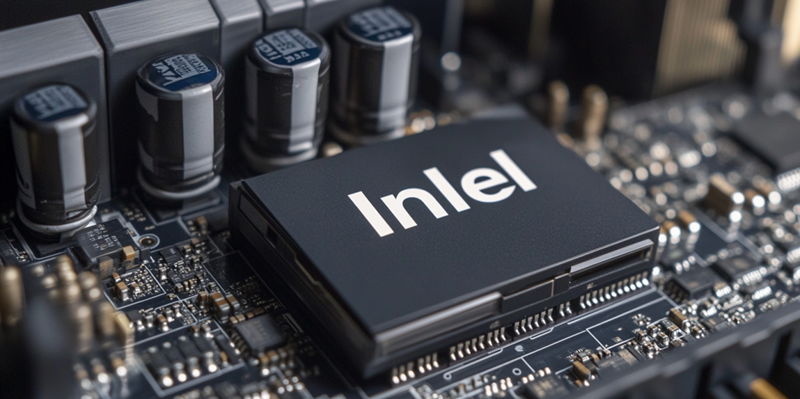Intel appears to be charting a new course in the evolution of their graphic processing unit (GPU) architecture with a focus on disaggregated chiplet designs. Traditional GPUs have relied on monolithic structures where all components are integrated into a single chip, tackling tasks ranging from rendering images to processing complex graphical data. However, a recently granted patent reveals Intel’s intention to shift towards a disaggregated architecture, where multiple smaller chiplets work together within a single GPU. This shift could potentially provide significant improvements in design flexibility and power efficiency—key factors for high-end graphics cards known for their considerable power requirements.
This innovative architecture isn’t expected to debut with Intel’s eagerly anticipated Battlemage GPUs, which are slated for release in early 2025. Instead, the disaggregated design may feature in later generations, possibly including the Celestial or Druid families. Although the concept of chiplet-based GPUs has been explored before, particularly with speculation around AMD’s RDNA 4 and Nvidia’s Blackwell GPUs, these strategies never came to fruition in flagship models. This history suggests there could be considerable challenges in establishing fast and reliable interconnections between chiplets without sacrificing overall performance.
Potential Advantages and Challenges
The design choice of disaggregating the GPU into multiple chiplets could impart substantial modularity, allowing for customized combinations of different capabilities and efficiencies depending on specific needs. This modularity can lead to enhanced power efficiency as sections of the chip can be powered down when not needed, thus conserving energy. Moreover, this approach opens up new possibilities for scaling performance by adding additional chiplets. Despite these potential benefits, several technical hurdles loom over the implementation of such designs. Chief among these is the challenge of achieving fast and reliable interconnections between the chiplets. Ensuring that data can move seamlessly between these smaller units without creating latency or performance bottlenecks is no small feat.
Another significant challenge lies in balancing the thermal characteristics of the entire system. Multiple chiplets working concurrently generate heat, and managing this efficiently is crucial for maintaining the performance and longevity of the GPU. The complexity of such a system also necessitates advancements in chiplet packaging and interconnect technologies, which are still evolving. Intel’s commitment to navigating these challenges demonstrates a forward-thinking approach in GPU development, and if successful, the payoff could be a leap in GPU architecture that aligns with future computational demands.
Intel’s Place in the Competitive Landscape
Intel has been endeavoring to make significant inroads into the competitive GPU market, where AMD and Nvidia have long held dominance. The introduction of the Arc series and the subsequent Battlemage GPUs were steps aimed at securing a foothold. However, market observers have raised concerns over Intel’s long-term dedication to their discrete Arc GPUs, especially given the relatively low-end expectations set for the initial Battlemage release. Nonetheless, Intel’s progress on the Celestial front and the recent patent activity indicate that they are still very much in the game. The patent for a disaggregated GPU points to a broader strategic vision of not just playing catch-up but potentially leapfrogging current technologies.
The backdrop for these advancements is a fiercely competitive market where both AMD and Nvidia have also been exploring similar chiplet strategies. While AMD’s RDNA 4 and Nvidia’s Blackwell GPUs have hinted at modular designs, these companies have yet to fully realize such architectures in their leading models. Intel’s pursuit of this technology not only signifies innovation but also a willingness to push the envelope in GPU design, potentially redefining efficiency and performance standards. Whether or not Intel can overcome the significant technical challenges to bring this vision to market remains to be seen, but the potential rewards certainly justify the effort.
Future Prospects and Implications
Intel is setting a new direction in the development of their GPU architecture by focusing on a disaggregated chiplet design. Traditionally, GPUs have been monolithic, with all components integrated into a single chip responsible for tasks like rendering images and processing complex graphical data. A recent patent reveals Intel’s plan to shift towards a disaggregated architecture, where several smaller chiplets collaborate within a single GPU. This new approach could offer significant benefits in design flexibility and power efficiency, both crucial for high-end graphics cards with substantial power demands.
However, this innovative architecture won’t feature in Intel’s highly anticipated Battlemage GPUs, expected in early 2025. Instead, the disaggregated design might appear in later generations, such as the Celestial or Druid families. The concept of chiplet-based GPUs has been speculated about before, especially regarding AMD’s RDNA 4 and Nvidia’s Blackwell GPUs; however, these strategies never materialized in flagship models. This history suggests significant challenges in creating fast, reliable interconnections between chiplets without compromising overall performance.

